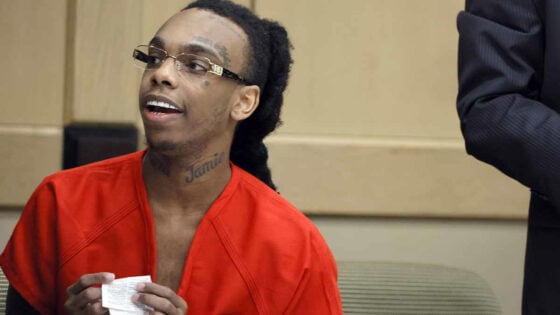Film
Tomb Raider Improves on the Angelina Jolie Films — Barely
Tomb Raider improves on the Angelina Jolie Films — Barely
Tomb Raider Movie Review
Why does Hollywood keep making film adaptations of video games? It’s a question worth asking, considering exactly zero of these adaptations have been successful as films. They’ve been despised by critics and mostly ignored by audiences, judging by box office grosses. So what makes a Tomb Raider adaptation seem like a good idea in 2018? The answer is right there on the terribly designed poster: Alicia Vikander. The Swedish actress has slowly gained prominence in English-language cinema, finally reaching wide attention with a mix of well-received art house films (Ex Machina) and Oscar bait (The Danish Girl). The Angelina Jolie-led entries were silly bits of occasionally fun trash, but there’s a hankering now for more big-budget, female-led action films — especially with a slightly more cultured pedigree. In one sense, the new Tomb Raider is a success because of that, but only slightly.
The film tries to paint Lara Croft (Vikander) with broad brush strokes from the very start; we see her kickboxing in a gym, valiantly fighting against a stronger opponent. When the other fighter catches Croft in a headlock, she refuses to tap out until the last possible second — Lara is not someone who cares to lose. She’s also reckless and impulsive, agreeing to participate in an illegal bike chase competition through London to earn some money to pay her escalating debts, which are barely covered by her meager bike messenger job. The race ends with Croft going to jail after crashing into a police car.
She’s bailed out by Ana Miller (a wasted Kristin Scott Thomas), a former business associate of her father, which is also when we learn that Croft’s problems are mostly of her own making — she’s the heir to a massive fortune after her father’s disappearance seven years before, but she refuses to accept it because doing so would acknowledge her father’s death.
It’s in this short section that Tomb Raider reveals how under-invested it is in both crafting a narrative that makes sense and developing Vikander’s character in any meaningful way. Anyone watching might assume that Miller is Croft’s step-mother, based on her edgy-yet-maternal relationship with the younger woman (the mother’s tombstone is revealed later), but there’s no move to clear up their relationship. Nor is there much of an attempt to explain how Croft went from the young daughter of a wealthy lord to her current state. Director Roar Uthaug and screenwriters Geneva Robertson-Dworet and Alastair Siddons don’t bother with little details, like what inspires Croft to lead her life or to eschew her family’s fortune.
After receiving a message from her late father, Croft deciphers it and finds a stash of his papers, hidden away since his disappearance. They indicate that he went to Japan and sailed to an uncharted island in search of the remains of Himiko, a fictional Japanese queen who was said to kill anyone just by touching them. And since all we really know about Croft is that she’s impulsive and misses her dad, it makes sense that she would fly off to Japan without a moment’s thought, in search of the boat captain who led her father to his final destination.
Up to this point, Tomb Raider has been glossed with a thin veneer of realism. Vikander’s Lara Croft nearly seems like a real person, albeit one we know almost nothing about; she at least has an air of vulnerability that helps to humanize her, and stands apart from Angelina Jolie’s earlier interpretation of the character. However, once Croft reaches that undiscovered island off the coast of Japan, any sense of reality completely evaporates. (Although the existence of an island off the coast of Japan that’s large enough to sustain life yet completely unknown is maybe the most fantastical part of the whole film.)
Soon the plot shifts into a bizarro version of an Indiana Jones movie, as the eponymous tomb is raided — which seems fun at first, but doesn’t make much sense. Raiders of the Lost Ark and its sequels were built upon a love of the adventure and horror serials that played before features in the early 20th Century, whereas Tomb Raider — though certainly indebted to Indiana Jones — never shows much affection for those films. Raiders is the obvious inspiration whenever booby-trapped spikes shoot out of the ground or heavy objects roll down to crush unsuspecting, but they’re inert in this context. The tomb raiding should be the most exciting part of a film named Tomb Raider, but it just feels like an obligation.
There’s also a particularly tasteless and puzzling coda at the end. (Spoiler alert: Lara Croft doesn’t die in a Tomb Raider film.) Upon returning to London, Lara stops at a pawn shop and buys two handguns. They’re an iconic aspect of the original video game character, but they don’t play well in 2018. American audiences who have recently seen the pleading faces of the teenage survivors of the high school shooting in Parkland, Florida, won’t necessarily react positively to Croft’s look of glee as she handles the two guns. Europeans, who have always had a less intense relation to firearms than Americans, may find the scene just as puzzling and tone-deaf.
The saving grace, the only aspect of Tomb Raider that’s marginally better than the originals, is Vikander. Other white dude film critics have waded into dangerous waters by opening on her sex appeal (or perceived lack thereof), but the film makes the radical (and appropriate) choice of not trying to make her a sex symbol at all. Her version of Croft gets just as beaten and bruised as any male action hero, and she’s also just as capable. It’s clear that Vikander has committed to the role, but sad because the film she seems so dedicated to isn’t up to her level. Another entry would be a waste of talent, time, and money, but if it makes it easier for Vikander to find major projects, I suppose that’s worth it.


































